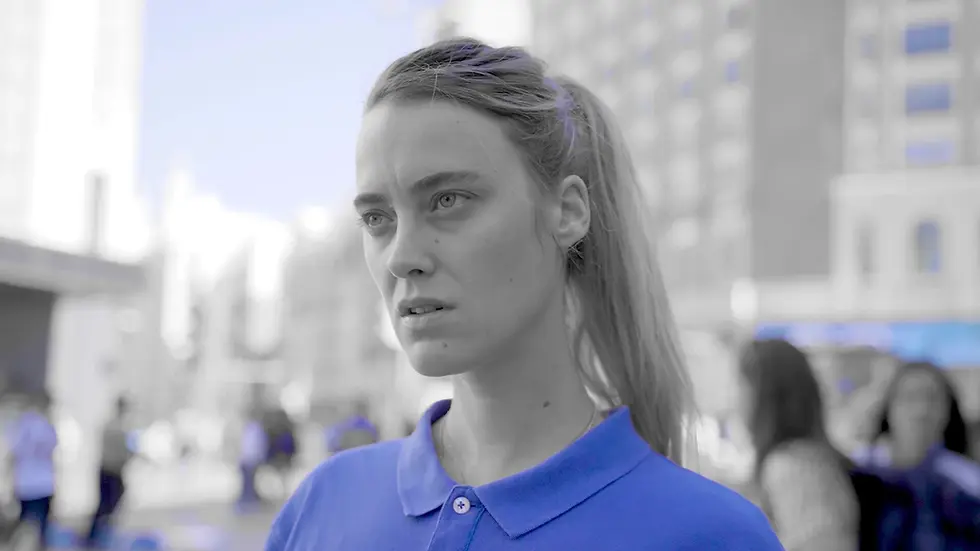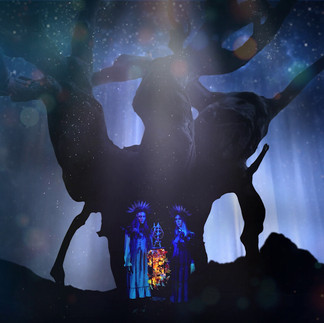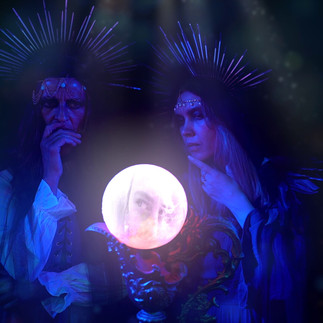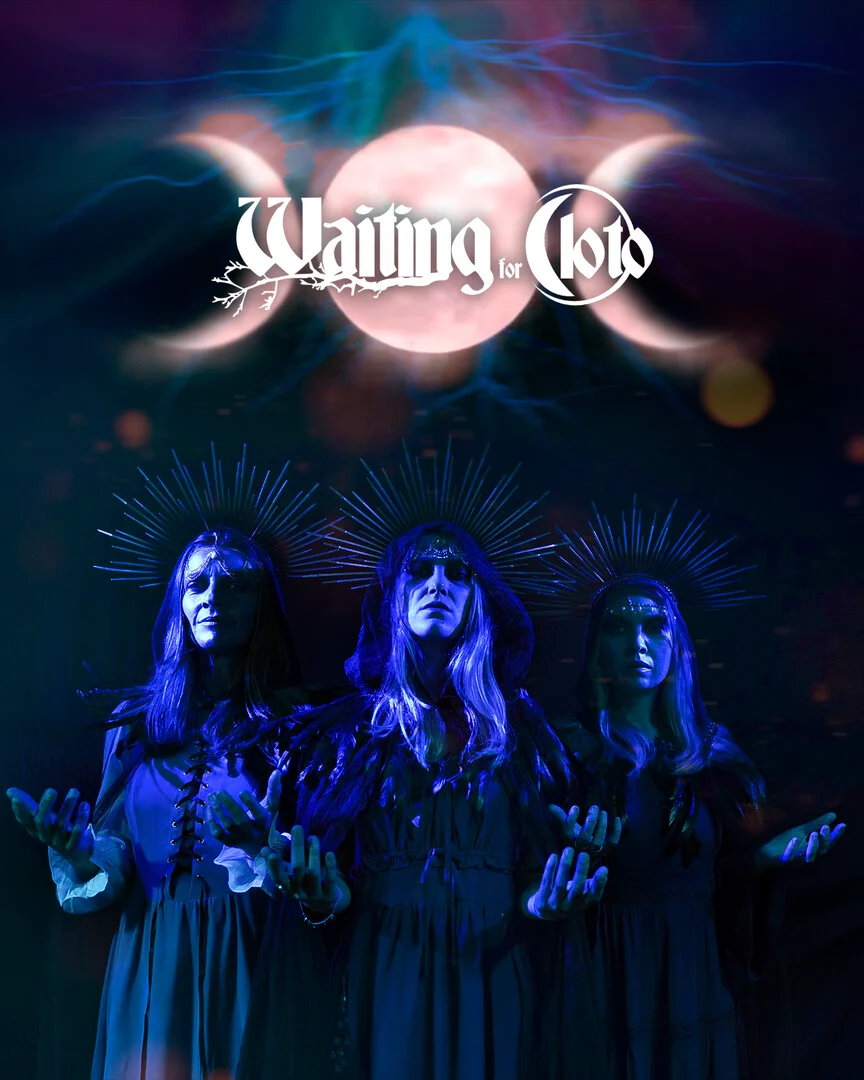Waiting for Cloto
- Tokyo Cine Mag
- 7 days ago
- 4 min read
The film Waiting for Cloto treads a dangerous edge that could have easily become its weakness. This perilous edge lies between fantasy and the experimental. Many cinematic works have suffered due to this very risk.

Experimental films often attempt to blend surreal spaces with what we perceive as reality, prioritizing elements in their narrative that have no place in a realistic storyline. What we see in experimental films is an effort to transcend objective reality and delve into subjective, mental realms. When a film decides to tackle abstract concepts and step into the inner world of its characters, tone becomes a critically important factor. The tone of a work is determined by a collection of details that relate to how its ideas are executed. When fantasy is involved, controlling the tone becomes exceedingly difficult. In other words, a work that aims to be both experimental and fantastical faces a very challenging path. This is because the world of fantasy typically deals with imagination and dreams.

When we encounter a fantastical work, we know we are about to navigate the realm of imagination, and this fantastical nature often makes the tone of the work uniformly unreal. In many cases, the essence of fantasy can be in direct conflict with the nature of an experimental film. In an experimental film, it’s crucial to exist between reality and imagination, to stand on the border of reality and surreality, where we are unsure whether what we’re seeing is real or imagined. The director of Waiting for Cloto takes this risk and incorporates a blend of experimental and fantastical elements in the film. J. Julian Vacas, who is the writer, producer, and director of this short film, clearly knew how to maintain the balance between an experimental film and a fantastical one, ensuring that the fantastical elements don’t dominate the entire work but instead remain a small part of the whole.

Waiting for Cloto centers on a main character played by Inés Klein. What we witness throughout the film is a portrayal of this character’s inner world through the reconstruction of her emotions. The film is striking in this regard because it shows that in the world around us, we see people who appear completely ordinary, yet none of us truly know the turmoil, excitement, or anxiety that might be brewing within these seemingly normal individuals. We don’t realize that even those who appear calm might, in the very moment they smile at us, be grappling with complex issues that are overwhelming them.
The film can essentially be divided into three parts. In the first part, we see two women who, in a mysterious or perhaps eerie setting, appear to be observing and monitoring real life. For these two women, who also resemble witches, connecting with real life means connecting with Cloto. At the end of this first section, we see Cloto in her real life. Thus, the second part focuses on the real world, the present day, and the circumstances in which Cloto lives and works. It’s in this section that we realize Cloto, despite her calm exterior, has a restless inner world. By the end of this section, when Cloto goes into nature, her connection to real life gradually severs, and the two witches—those two sisters—arrive to take her away. The third part concludes in a way that shows Cloto has become like them, wearing a similar outfit and departing from the world of reality.
Waiting for Cloto symbolically and metaphorically tells the story of a transformation—a story of rebirth, or perhaps a story of an earthly death. Recall the scene where Cloto lies on the grass in nature, and we see the roots of trees beneath the ground with a beating heart among them. This scene is a clear call from Mother Nature. Nature is breathing, nature is alive, or one could say nature has embraced Cloto, who lies like a fetus in its arms. Therefore, Cloto’s story is essentially one of an earthly death to attain eternal life. Now, we might ask ourselves, “Why? Why would a girl like Cloto want to detach herself from real life?”
The answer to this question lies in the second, or middle, section. Although the film itself isn’t divided into distinct episodes, based on the mood and characteristics of each scene, it can be segmented into three parts, with the middle section focusing on Cloto’s life in the city. As we see, Cloto is not happy with this urban life. She has a sad expression, wanders around with a cigarette in hand, and even seems to be trapped by the towering buildings surrounding her. Urban life brings nothing but sadness and depression for Cloto. This is why, when she reaches nature, she smiles for the first time. Visually, the director provides us with the necessary cues: the scenes of the city are chaotic, crowded, and anxiety-inducing, but when Cloto arrives in nature, the visuals become still, vibrant, and filled with color, and a complete sense of calm envelops the main character. Thus, one of the reasons for her escape to nature is the overwhelming urban life itself. It’s within nature that we feel Cloto, in order to achieve eternal peace, needs to break free from the hollow repetition of urban daily life and return to the cycle of nature—a cycle where, unlike urban life, everything is calm, fluid, and beautiful.

Since we’re dealing with a complex film, it can also be interpreted as ending with the death of its protagonist, but this ending is presented in a way that is filled with symbols of liberation. We might imagine that Cloto has taken her own life in nature. The ropes that are cut and the path Cloto takes in a dreamlike state subtly point to this death. The director skillfully shows us this movement, this transformation, and this change of state. We beautifully witness what the director believes a dying person experiences. Cloto’s death—or her return to the cycle of nature—whether intentional or symbolic, points to an important idea: the significance of becoming one with nature. It doesn’t matter what we suffer from or how we cope with our pain; what matters is understanding that uniting with nature is a good solution for human life. What can free a person from the sorrows and grief of modern life is returning to a life in nature. Waiting for Cloto is a captivating and engaging film that successfully conveys these themes.











Comments